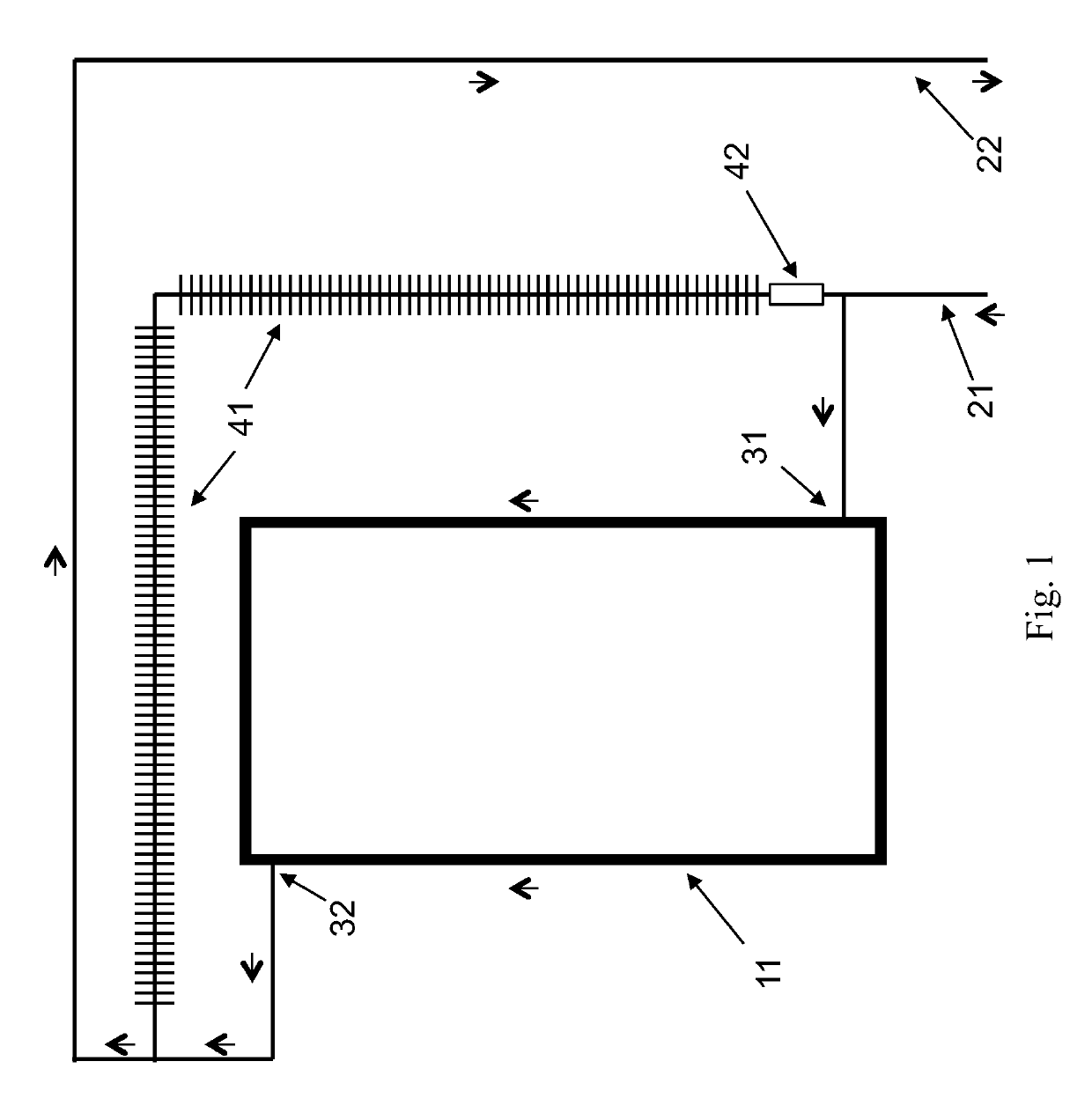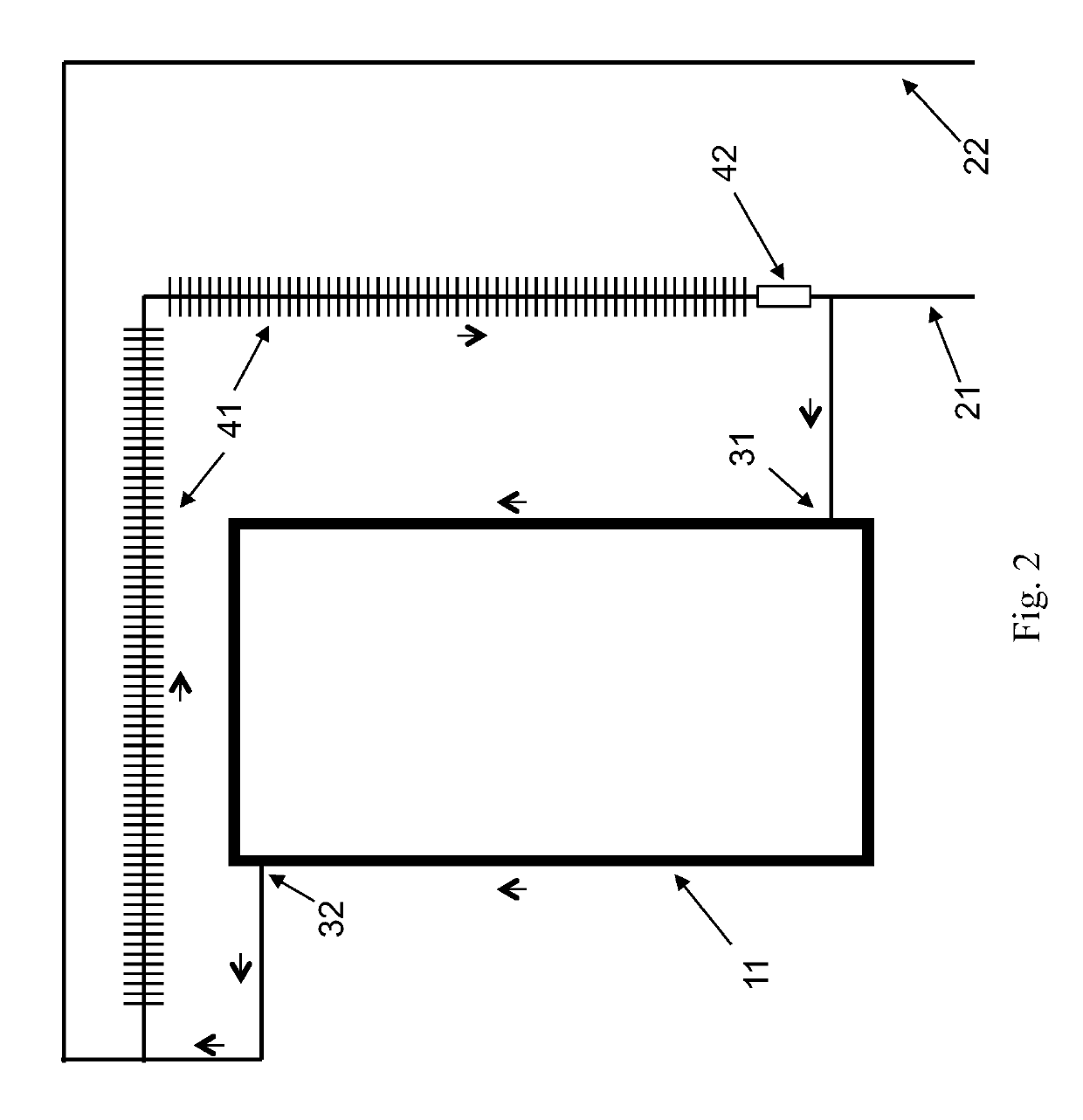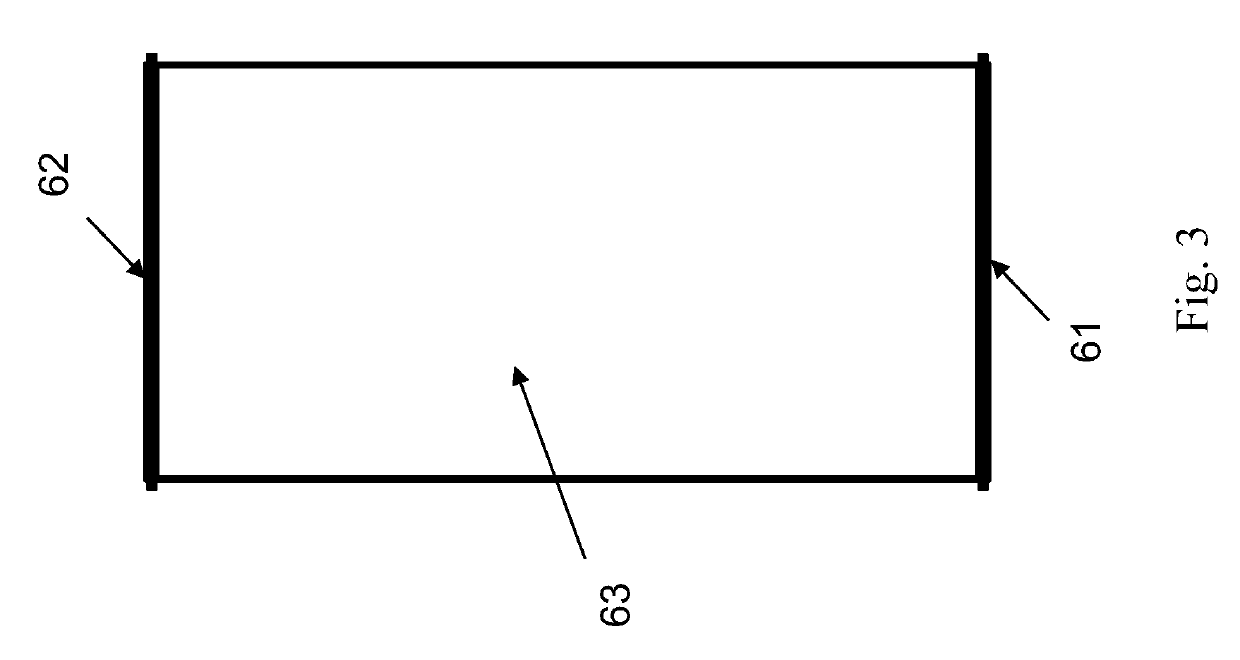Thermosyphon cooling for overheat protection
a technology of overheating protection and thermal insulation, applied in the field of fluidic systems, can solve the problems of inability to use spring-type check valves, potential damage, and overheating of solar thermal collectors for hot water and space heating, and achieve the effects of improving overheating protection, increasing reliability, and being more reliabl
- Summary
- Abstract
- Description
- Claims
- Application Information
AI Technical Summary
Benefits of technology
Problems solved by technology
Method used
Image
Examples
Embodiment Construction
1. Definitions
[0020]Fluidic system. “Fluidic system” is defined, herein, as a system comprising fluid, components and piping that come in contact with the fluid, and components for monitoring or controlling the system. A fluidic system may be open or closed. A fluidic system may be a subsystem of a larger fluidic system.
[0021]Piping. “Piping” is defined, herein, as a system of joined and fluid-coupled fluidic conduits through which fluid may flow from one component of a fluidic system to another. Piping includes, but is not limited to, pipes, tubes, hoses, manifolds, connectors, such as tee's or elbows, and the means for joining them to each other and to components. Piping may be rigid or flexible. Piping connections may be welded, bolted-flange, threaded, soldered, union-joint, pressure-fit, push-fit, fitting-type, compression-type, heat-welded, heat-soldered, clamped, glued, or accomplished with other joining methods.
[0022]Flow path. “Flow path” is defined, herein, as an assembly ...
PUM
 Login to View More
Login to View More Abstract
Description
Claims
Application Information
 Login to View More
Login to View More - R&D
- Intellectual Property
- Life Sciences
- Materials
- Tech Scout
- Unparalleled Data Quality
- Higher Quality Content
- 60% Fewer Hallucinations
Browse by: Latest US Patents, China's latest patents, Technical Efficacy Thesaurus, Application Domain, Technology Topic, Popular Technical Reports.
© 2025 PatSnap. All rights reserved.Legal|Privacy policy|Modern Slavery Act Transparency Statement|Sitemap|About US| Contact US: help@patsnap.com



